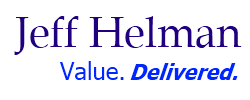Challenge Me
I have been part of some great teams tackling big problems, and I have been part of great teams solving smaller problems. Both are rewarding, but moving the needle on really big problems is the most fun.
I seek a mission which takes full advantage of my unique abilities and demands that I stretch beyond my comfort zone. This is a formula for outsized accomplishments that matter. I yearn to make a real difference on problems which are as bewildering as they are consequential. Current times present plenty of problems which qualify–many of which revolve around our health.
Missions for Health
My focus is on the intertwined challenges of advancing our physical and financial health, such as:.
Health IT Interoperability
Meaningful progress on interoperability has been made since our early efforts at ONC to promote the NHIN (now eHealth Exchange), and I have a huge amount of respect for the countless providers, patient advocates, vendors, government servants, policymakers and activist patients who have worked tirelessly for decades to create this momentum.
Despite those achievements, health information portability across providers and between EHR systems remains unacceptably spotty. On the other hand, I am especially excited about the unprecedented momentum FHIR has created for accelerating interoperability solution development and adoption. Let’s add fuel to this FHIR.
Frictionless Patient Data Availability
Despite federal HIPAA language about patient data being owned by patients, stories abound about patients and caregivers being denied ready access to this information. (Here is a disturbing sample of such accounts.) Ironically, the convergence of data privacy awareness by consumers (via GDPR, CCPA and other regulations) and data blocking behavior by some legacy EHR vendors provides simultaneous momentum and additional challenges to realizing the full promise of patient data availability. We need to remove blockers here.
Healthcare Delivery Innovations
Examples include next-generation telemedicine solutions, concierge primary care, pharmacy benefit manager (PBM) disintermediation, second-generation ACOs and others. I am very excited about these innovations–learning more quickly.
Healthcare Pricing Transparency
I think we all know intuitively that healthcare pricing in the US is opaque; when is the last time most of us had the presence of mind to even wonder about the cost of a medical procedure in that panic-filled moment we find out we need it–let alone ask the people about to perform it?
What I did not realize, until reading The Price We Pay, was that this lack of transparency creates opportunities for an alarming number of unscrupulous hospitals and clinics to charge unsuspecting patients many multiples of reasonable prices, then actively ruin the financial lives of those patients when they are unable to pay. We can debate the theoretical impact of pricing transparency, but this predatory pricing must stop.
Financial Health
Most of us have heard that very few people with modest incomes have little savings, if any.
But did you know that at least 1 in 4 people making $150,000 per year are also living paycheck to paycheck? Is it any wonder that so many are so susceptible to financial ruin from healthcare expenses? We can fix this.
Of course, I cannot tackle all these topics at once, and I’m open to other challenges not listed here, but I hope you get the idea. Challenge me.
